
| Specifications |
| Publisher: Sharada Publishing House, Delhi, Bharatiya Kala Prakashan | |
| Author ETSUO YAMAMOTO, D. P. SHARMA, P. CHANDRAMOHAN | |
| Language: English | |
| Pages: 365 (Throughout Color and B/W Illustrations) | |
| Cover: HARDCOVER | |
| Weight 1.81 kg | |
| Edition: 2008 | |
| ISBN: 9788188934522, 9788180901942 | |
| HAX602 |
| Delivery and Return Policies |
| Ships in 1-3 days | |
| Returns and Exchanges accepted within 7 days | |
| Free Delivery |
|
| |||
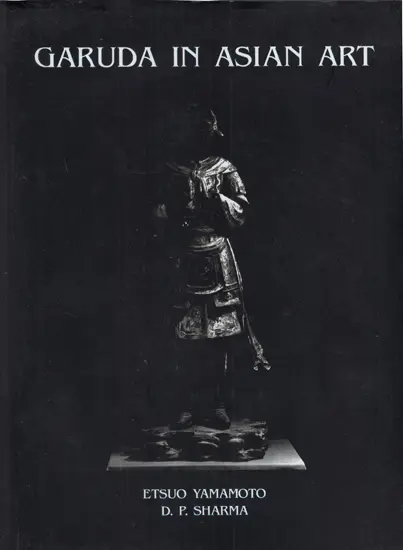 |
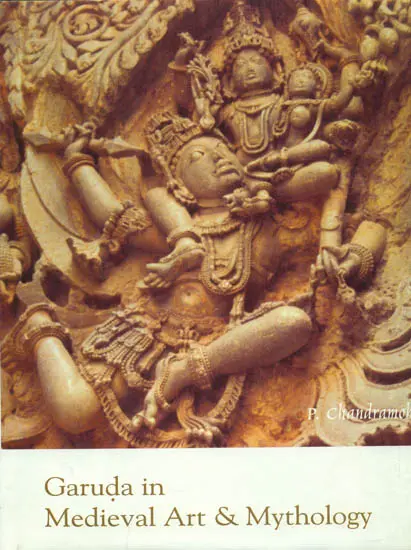 |
||
Garuda in Bronzes and Garuda in Tantra. This also deals with Garuda or Eagle abroad, Garuda in India, Nepal and Bhutan and Garuda in living tradition in South-East Asia. In the last part there is photographic documentation of Garuda in Asian Art. The concept of bird and snakes was born in Mesopotamia around 3500 B.C. Garuda or Suparna, the Celestical bird was known in the Rig Vedic Age or Early Harappan period (3500-3000 B.C.). This book is an attempt to manifest how and when the idea of Garuda originated and the idea has been disscused.
D.P. Sharma is M.A. in archaeology from Allahabad University. The significant contribution of the author is discovery of Menander (Posthumous) Brahmi inscription from Reh. During 1983-84, he was awarded the Commonwealth scholarship and he meritoriously qualified M.A. (Archaeology) from Institute of Archaeology, University of London. He participated in the excavation of Sussex (U.K.) and Pincenvent (France). He did Ph.D. research in Allahabad University. He was Associate Professor in National Museum Institute and Head of Harappan Collection. In National Museum, New Delhi. He is Director Bharat Kala Bhawan B.H.U., Varanasi. He has 24 books and 200 research papers to his credit.
However, the author is of the view that the belief about the actual existence of this mystical bird has penetrated deeply into not only the subconscious of individuals but also has got woven into the basic structure of the cosmos.
Symbolion that has the bird and the snake as the exactly opposite concepts was born in Mesopotamia. The hind symbolizes the sky and the snake, the earthy and water the two relatively major clements of the cosmos. This symbolist thought immersed into the life and enure of the Eurasian continent like water seeping into the mother carth. In India, this thought was reconstituted into the myth of Canada and Naga and was disseminated again mo South East Asia, China and Japan along with Hinduism and Buddhism in its new form.
The contrasting thought of bird and snake deeply steeped in the cultural fabric was already there in differen parts of the world in the mythology, folktales and legends but Ganada and Naga that got transplanted along with Hinduism, Buddhism and other gods brought about a major transformation like a shockwave as if overwriting all that existed until then and triggered the birth of a new culture.
The author formulated this hypothesis many years ago and in order to verify it has carried out fieldwork for the last 30 years all alone Sonse years ago when he met De Deo Prakash Sharma, be requested him for cooperations to collect materials and pictures about Garuda in India. In the process of their work, many differences in their approaches and views were discovered but Dr. Sharma was kind enough to give a patient hearing and show understanding to the author's views and was even kind enough to agree to co-author this book. This book is only an initial attempt to manifest how and when the idea of Garuda was originated and how and where the idea has been diffused.
In India, Ganesh is a highly popular god id Croda in author's opinion is not even as popular as Hanuman. Since Ganada is the vehicle of Vishu, he may ultimately take us to the heavens and may provide us with the nectar Thanks to the divine guidance of Garuda, the author has been able to carry out his research for long in an enjoyable manner. Moreover, Garuda has even bestowed good tack on him.
The author is indebted to a large number of people who made this book a possibility but it may not be possible to name each one of them here. However, some of them who need special mention are Dr Prem Morwani, (Prof Jawaharlal Nehru University) for his valuable advice and painstaking translation from Japanese into English in spite of his busy schedule and Shigei, his wife, who looked after the family during his absence for 3 months at a stretch) every year for 30 years when he traveled overseas.
Finally, the author would like to express his adoration for Garuda for blessing him with the opportunity to carry out such meaningful research that was difficult, but in an enjoyable manner. Further, the author prays to Garuda to bring good luck and protection to all those whom he has come to know during the making of this book
**Contents and Sample Pages**
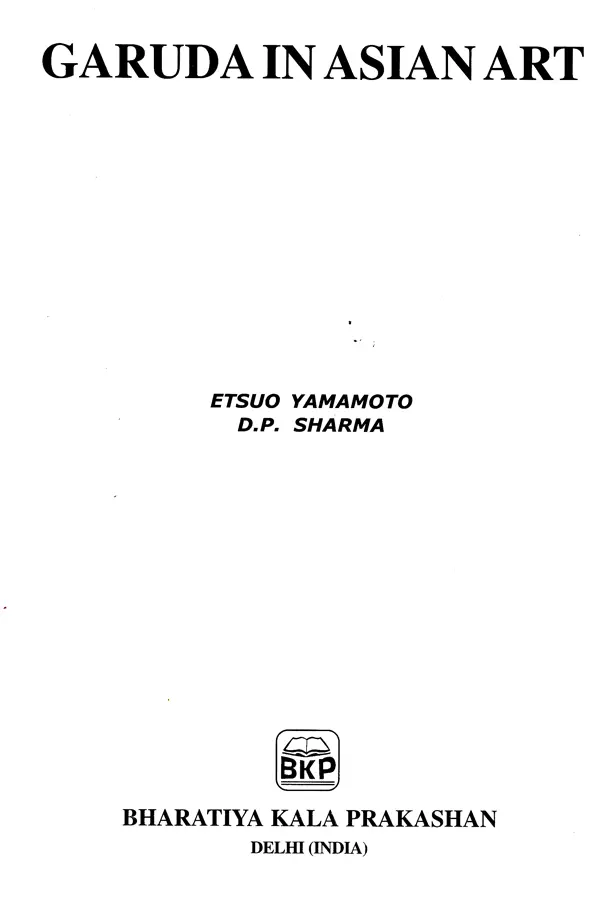
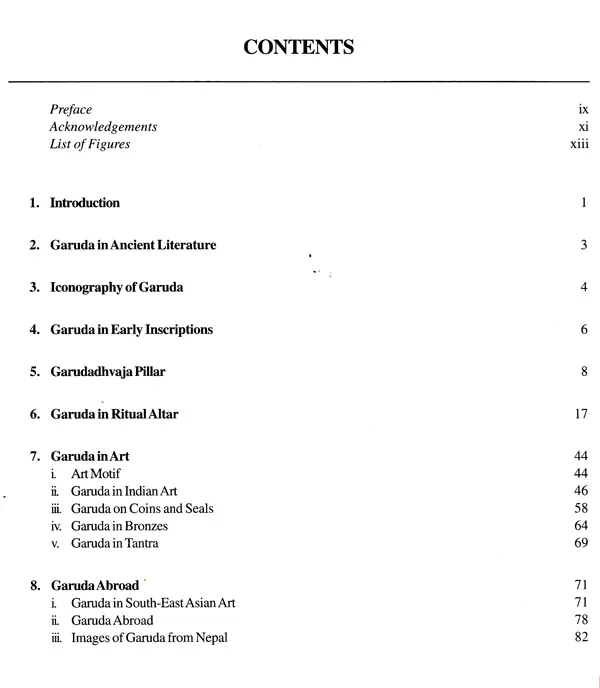
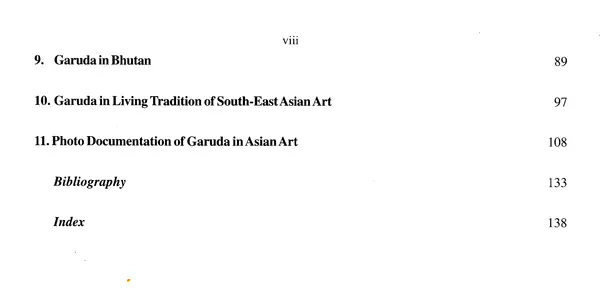
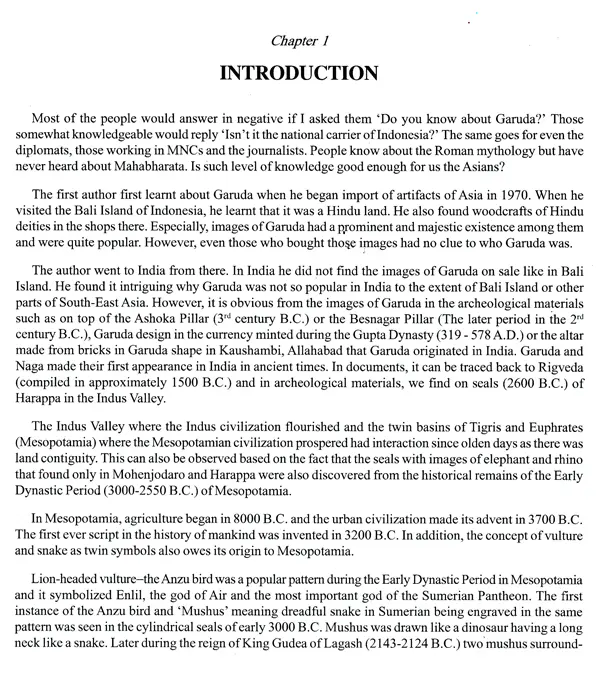
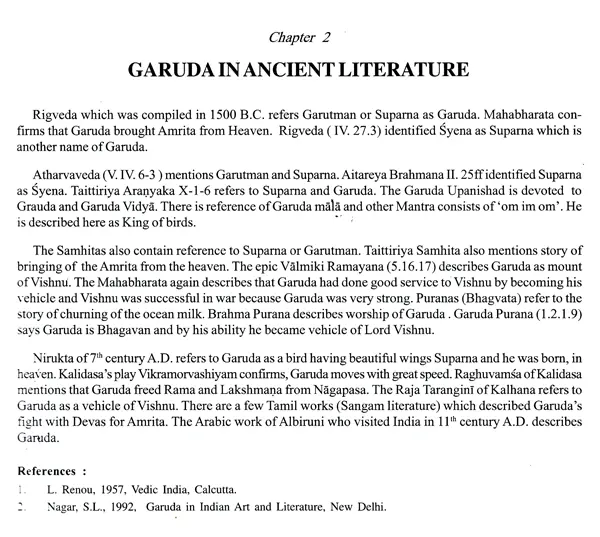
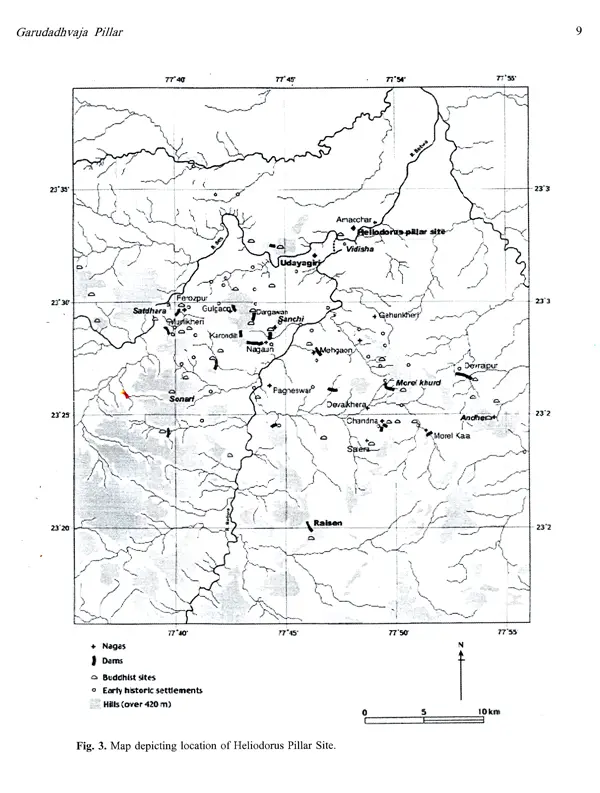
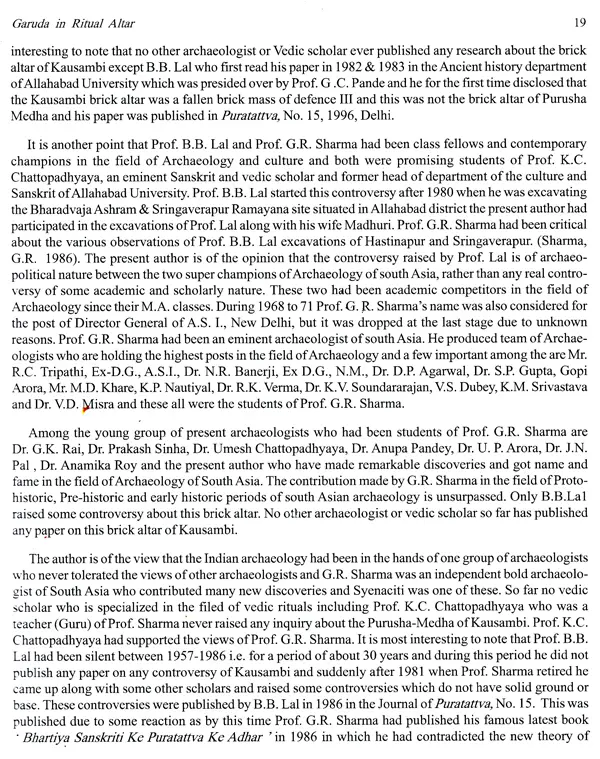
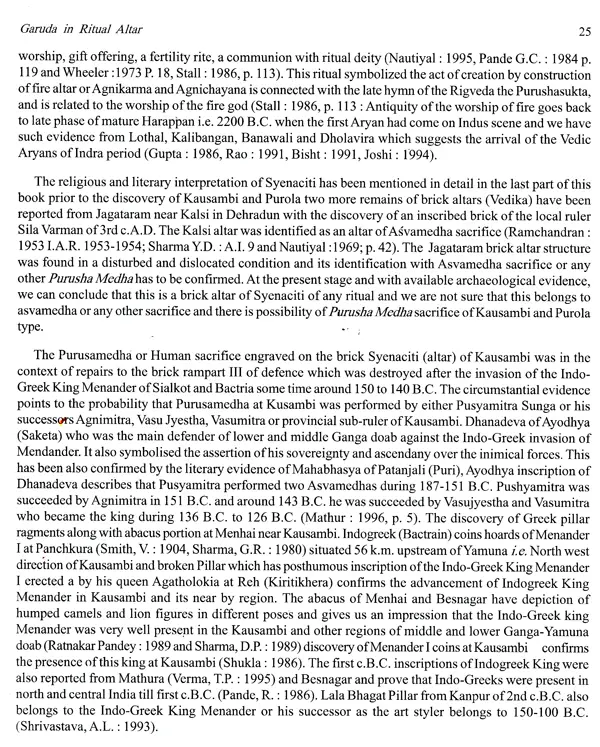
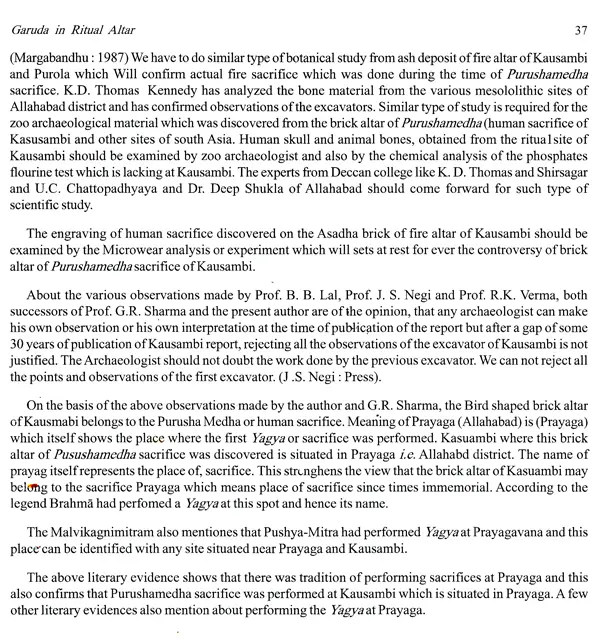
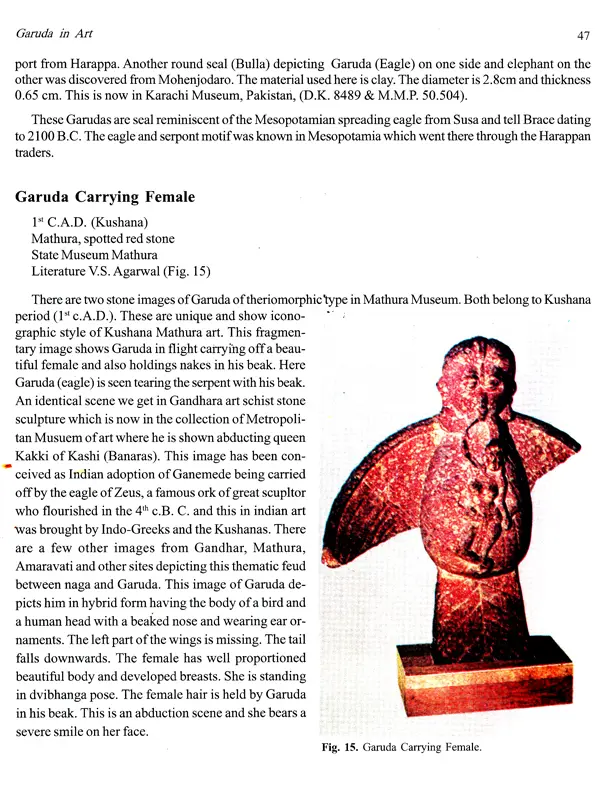
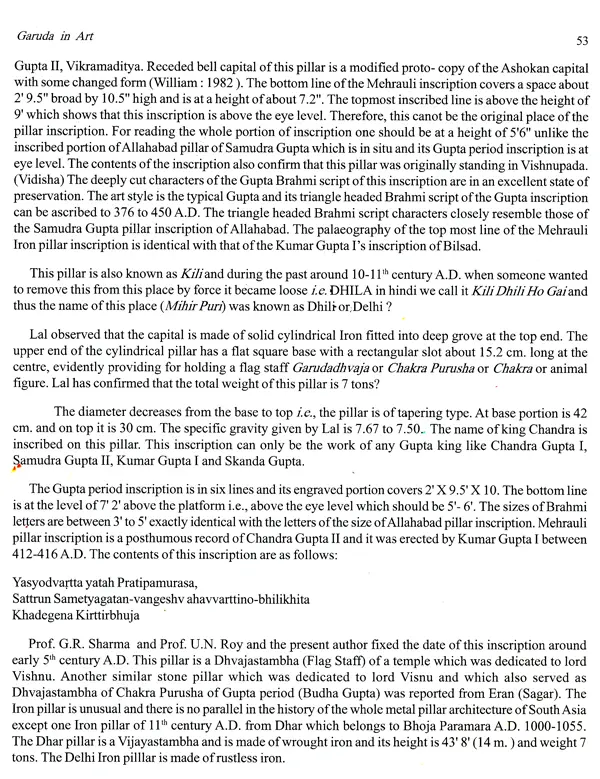
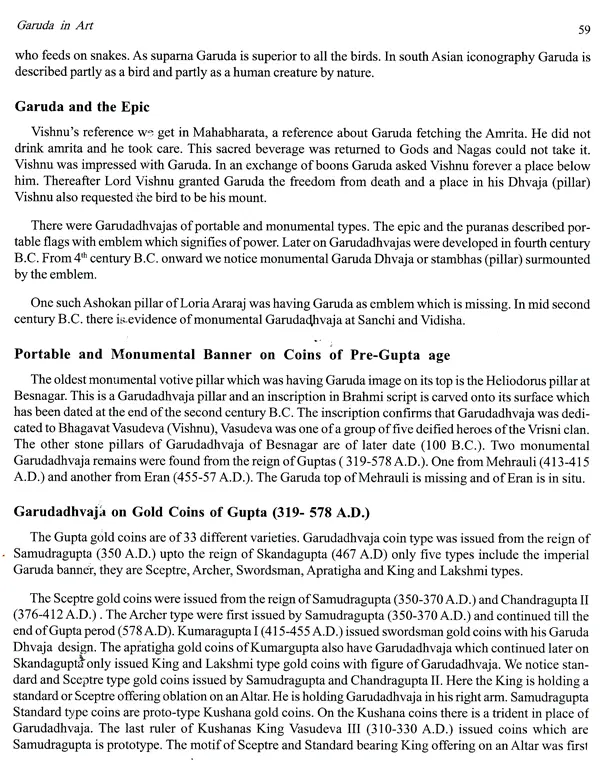
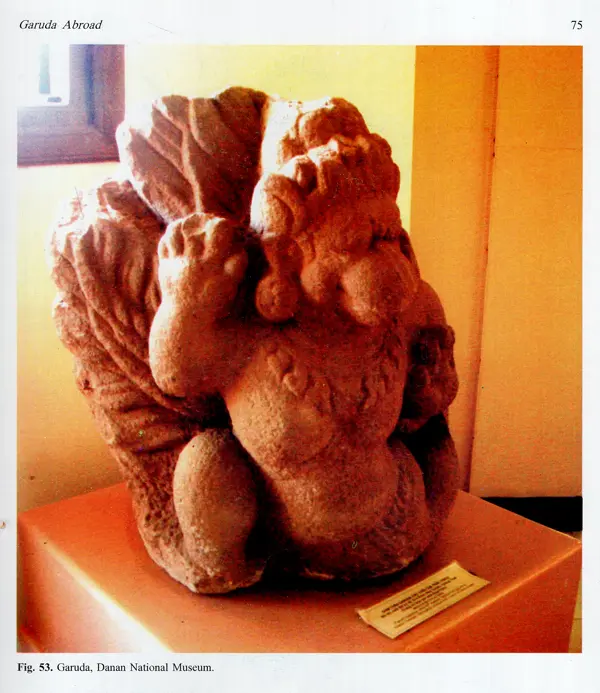

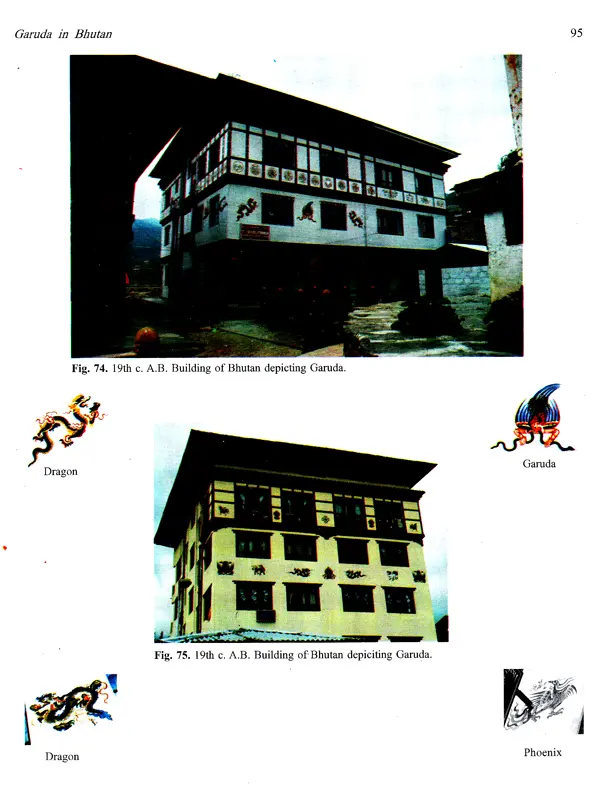
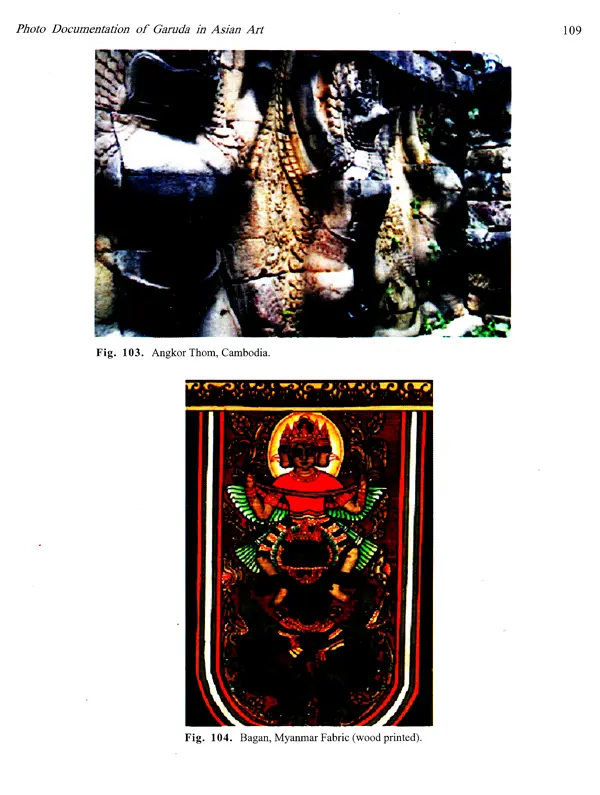
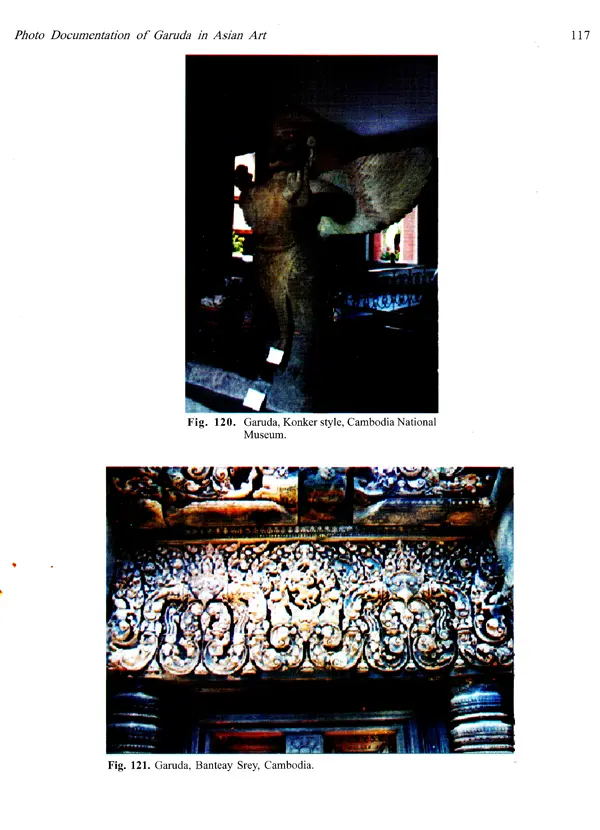

The work on Garuda, is the only one of its type on a thematic delimitation. There are several books on the art of India in general, that of South India or as for the matter Tamiinadu. Few books have a thematic delimitation, e.g. gopuras (J.C. Harle) and temple cars (Raju Kalidos). Several books on dynastic arts have come out of which the recent one on the Nayakas (R.K.K. Rajarajan) is noted. C. Sivaramamuri has brought out his magnum opus on Nataraja in Indian and south-east Asian Art. The present work is on a minor deity, Garuda. Though Garuda is one among the amsavataras of Visnu, he came to be elevated to a higher level in course of time.
The book systematically traces the mythology of Garuda from puranic sources. An important of the primary sources is that the Tamil ideas from Various is an exclusive chapter on the various literary works that go dfter Garuda such as Garudagatyatri.
However, that most important contribution is the reflection of Garuda in the plastic and pictorial arts of the Indian subcontinent. The roots traced and its impression in early medieval art such of Calukya and Pallava examined. The high-pitch of the Garuda cult is taken down to the Vijayanagara-Nayaka art.
Garuda occupies a status akin to Nandi. If Nandi is placed in an axial alignment with Siva/Linga, Garuda is assigned the same stat in Visnu temples. Besides he appears on the corners of various talas of the vimanas and gopuras in addition to walls of the temples in Tamilnadu. The last chapter deals with the images of Garuda in greater Indian art, including countries such as Nepal, Cambodia and Jawa. The book is a value adding contribution to Indological studies in general and that Indian art history in particular.
Dr. P. Chandramohan hails from an agricultural family in the tiny village of Chellampatti that lies to the west of the Madurai University. The first to takes the doctoral degree in a rustic setting, he did his bachelor’s degree from Vellaichamy Nadar College at Nagamali Pudukkottai and Master’s in the the Department of Art History from Madurai Kamaraj University. He migrated to the Tamil University where he took his M. Phil. And Ph.D. under the inspiring guidance of Prof. Raju Kalidos. He along with Dr. R.K.K. Rajarajan had done extensive field-work all over South India and has attended several conferences all over the country, particularly the Indian History Congress, Indian Art History Congress, South Indian History Congress and Tamilnadu History Congress.
A firt class gradute from the Madurai University, he has won the appreciation of his teachers by his abiding scholastic interest. After taking his doctoral degree, he served as Research Assistant in a U.G.C. Major Project that was operating in the Mother Teresa University and was posted in the Tamil University under the co-Director, Prof. Raju Kalidos.
He has a number of articles in his credit in the proceeding of the South Indian History Congress and Tamilnadu History Congress. A few articles are pending publications in the international journals from Rome and Naples.
At present, he is Lecturer in History, Government Art College at Mellur (Tamilnadu).
Dr. P. Chandramohan, the author of the book, Garuda in Medieval Art and Mythology was my ward and did his M. Phil. And Ph. D. under my guidance. H ailing from a backward area in Madurai, the author took first class degrees in bachelor’s and master’s. His research monographs were highly commended. The author’s M.Phil. thesis is already published. It is s credit to the author’s hard because it is a naked fact that several of our doctoral degress still lay on a dark corner of the Indian university’s libraries unpublished. Congratulations to the author for his highly commended works.
Garuda is one among the amsavatras of Visnu and held in high esteem in Tamil Vaisnava tradition as Garudalvar. Garuda is the vahana of Visnu and the Lord’s alter ego. The birth of Garuda Purana. The book traces the mythologies of Garuda systematically from various puranic sources and his pratimalasana from the available soures. An important dimension of the study is that it has brought to light all the available Tamil sources. This is an important contribution because scholars at the pan-Indian level do on accord the due recognition to Tamil sources of thought. This may not be due to any oversight or negligence on part of the scholar. It may mainy be due to ignorance of Tamil. I hope scholars other vernacular zones must come forward to tap sources from the regional literatures of Indian such as Telugu, Kannada, Bengali and so on.
The book systematically traces the imagery of Garuda from sculptures and paintings from the most ancient to the Nayak. The author has spent lot of time libraries or inspired friends from other part of the world to muster the needed data. The story of Garuda in Indian art from the Heliodorus Pillar of the pre-Gupta time to the Garudasthambhas of the Vijayanagara-Nayaka time is ling and presents an interesting and inspiring reading.
The notes presented on Garuda in south-east Asian art add a new dimension to the study. Though several scholars from the west have worked on the subject, the present author adds useful discussions. He has not failed to thank those brought materials from Berlin and Stuttgart.
I am very happy to see that several academic works of the Tamil University o fThanjavur are being published by M/s Sharada Publishing House.
The present work on Garuda in Medieval Art and Mythology is result of my research in the Department of Sculpture & Art History of the Tamil University of Thanjavur. There are several books on Visnu in general, His avataras or major iconographical froms (e.g. Sesasayi). Very few book deal with amsavataras such as Garuda. In addition to being an amsavataras, Garuda was the vahanaof the Lord Visnu according to the Garuda Purana. Overwhelmed by the heroic exploits of the King Bird, the Lord himself invite Garuda to be his vehicle. Earlier I did my M. Phil. On a similar subject that has been published since then. I was interested in going deep into the subject and selected this topic for my research.
For the present work; I have undertaken field work all over South India. The range of study covers Helidorus Pillarnear Vidsia to the later Rajasthani paintings. Much of the material preserved in the German Museums at Stuttgart and Berlin have been deployed to write a chapter on Garuda in South-east Asian art.
The sources covered include those in Sanskrit and Tamil. Scholars have so far very gone depended on Sanskritic to write Indian art history. Very few scholars have gone deep into the Tamil sources. The recent study of Early Medieval art by Prof. Raju Kalidos is a very good example in this context (see Encyclopaedia of Hindu Iconography Early Medieval in four volumes, Sharada PublishingHouse, Delhi, 2006). I have taken care to muster has a bearing on Garuda. This adds a new dimension to the study, which other miss.
I am thankful to my guide Prof. Raju Kalidos and all officers of the Tamil University where I did my work. I am beholden to Dr. R.K.K. Rajarajan (Eritreen Institute of Technology, Asmara, Eritrea) and R.K.K. Parthiban (Brandenburg Technological University, Cottbus, Germany) who did all the photographic work. Both of us were colleagues, working in the Tamil University for our doctoral thesis during the years 1997-99.
I am beholder to my former teacher, the late Dr. A Veluswamy Suthanthiran. I thank my parents, brothers and sisters: A. Mayandi, G. Ponnuthai, Vijayarani Manoharan, Ilangovan and Rajasekharan. The source of inspiration was my wife Vairakkodi and son Varsan Mayan. I also record my indebtedness to my uncles V. Nehru and Malairaja.
M/s Sharada Publishing House, is thanked for having taken the book for publication. I am deeply beholden to the late Shri B.L. Bansal who during his visit to Thanjavur selected this work for publication. I thank all those who were of help to me in course of my research.
| Foreword | v | |
| Pareface | ix | |
| Abbreviations | xi | |
| List of Plates | xiii | |
| Chapter 1 | Garuda in Mythology and Literature | 1 |
| Chapter 2 | Literature Bearing of Garuda | 31 |
| Chapter 3 | Gsruda in Pre-Medieval Art | 41 |
| Chapter 4 | Garuda in Early Medieval Art | 53 |
| Chapter 5 | Garuda in Later Medieval Art | 71 |
| Chapter 6 | Garuda in Vijayanagara-Nayaka Art | 83 |
| Chapter 7 | Garuda in Greater Indian Art | 97 |
| Conclusion | 109 | |
| Glossary | 115 | |
| Bibliography | 125 | |
| Index | 143 |
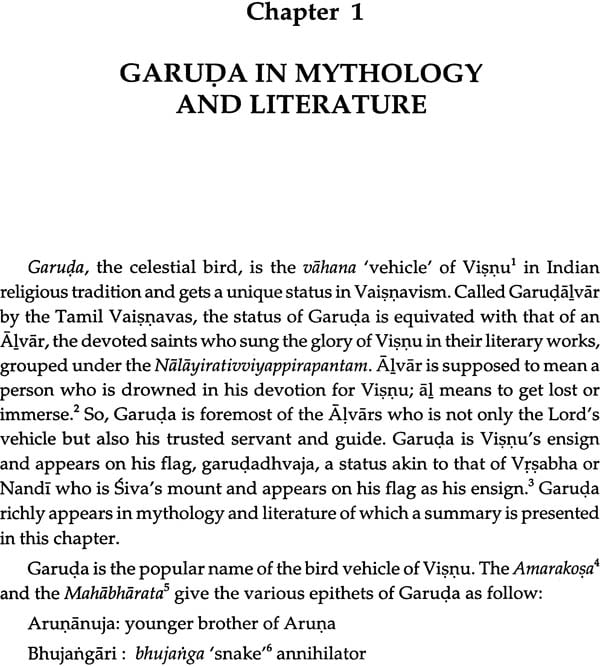
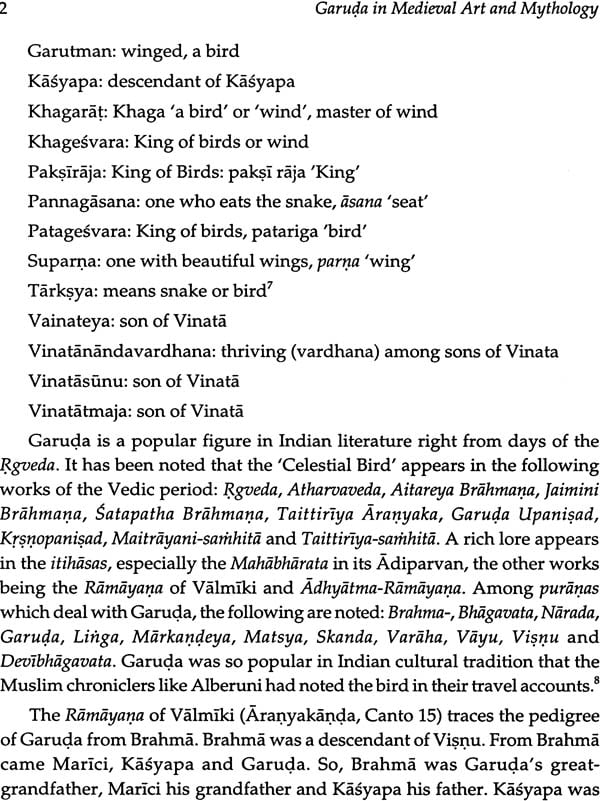
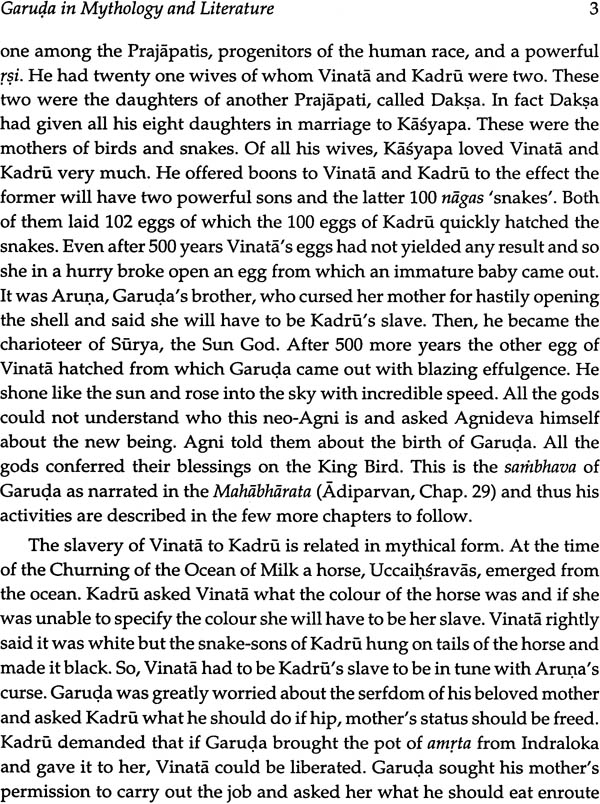
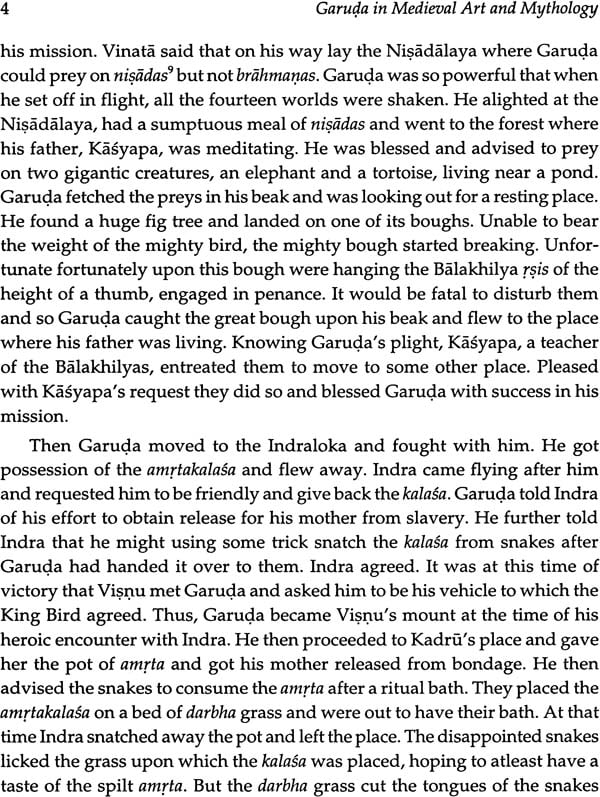
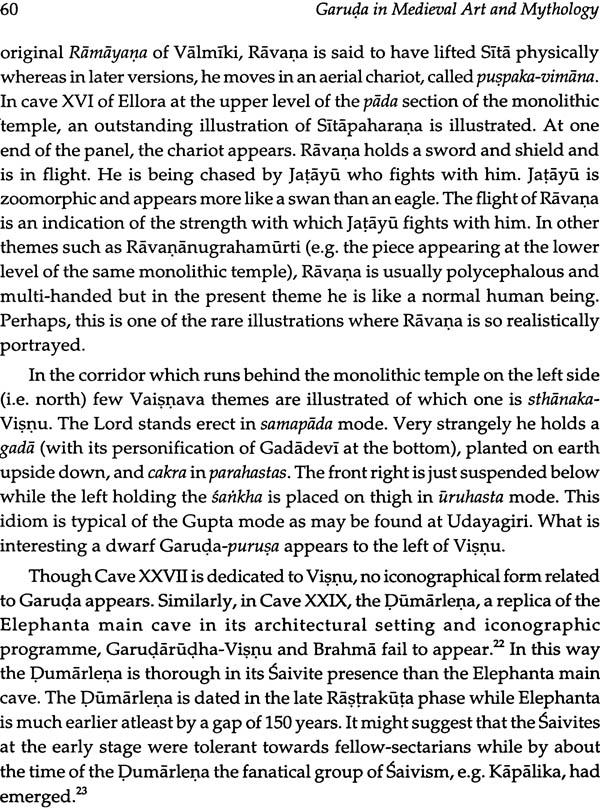
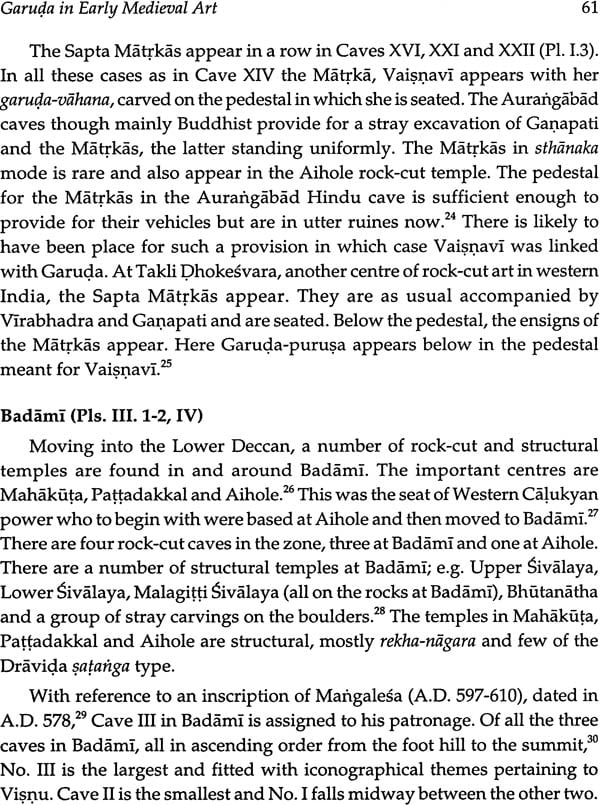
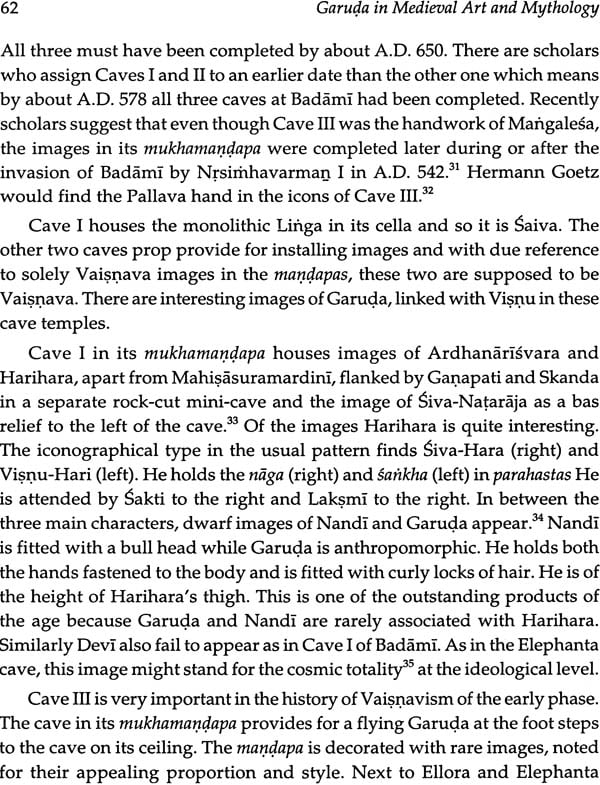

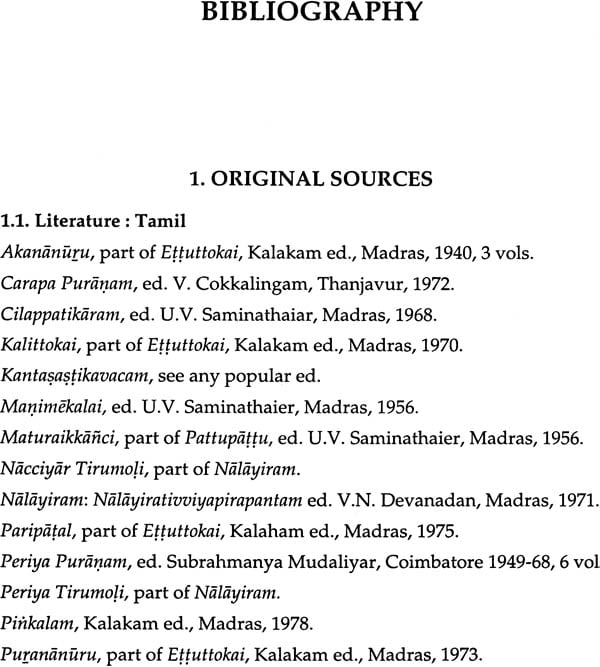

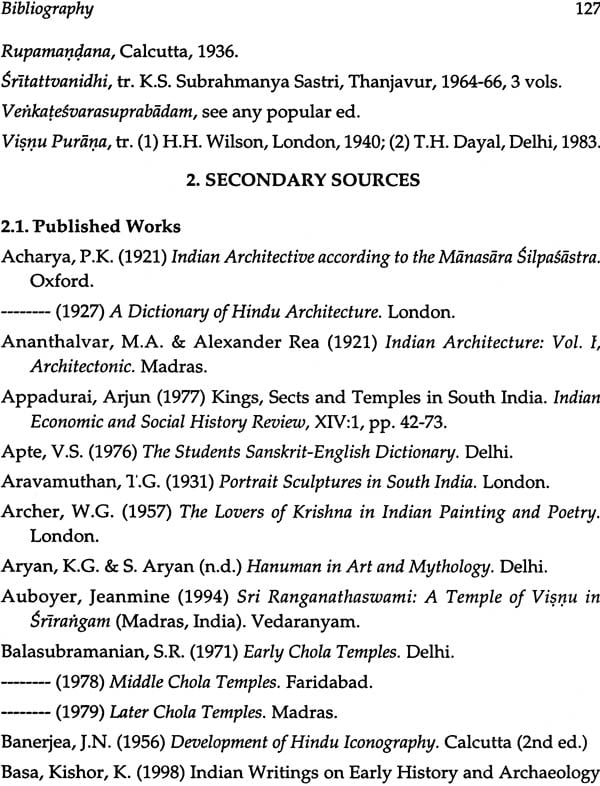
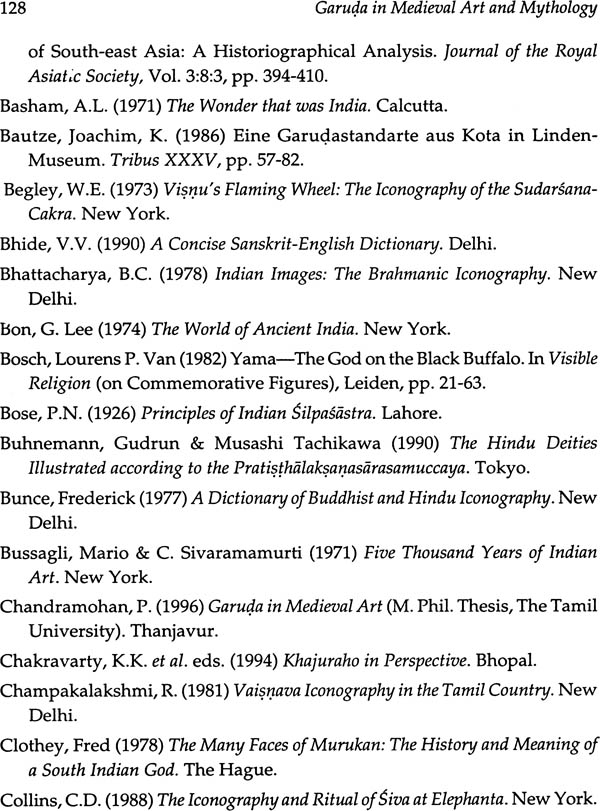
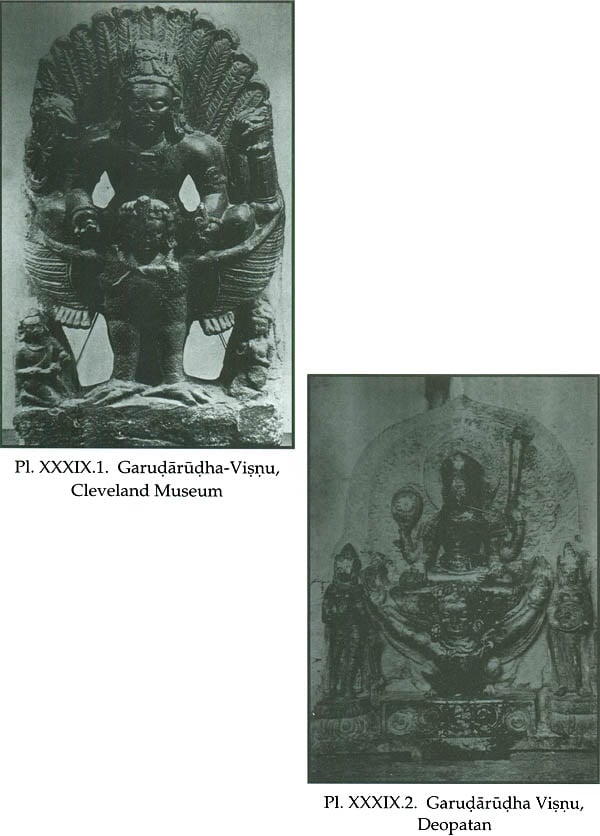
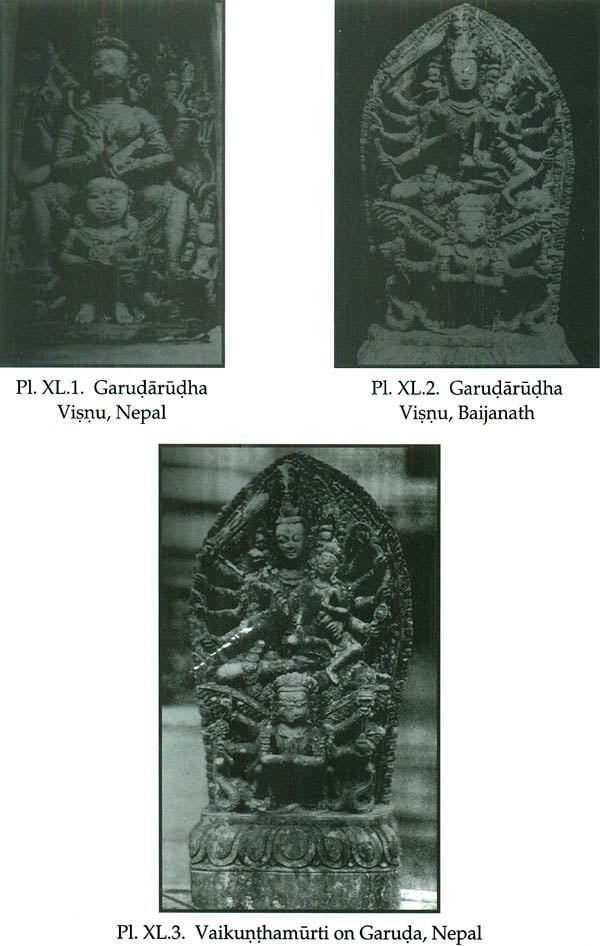


Send as free online greeting card
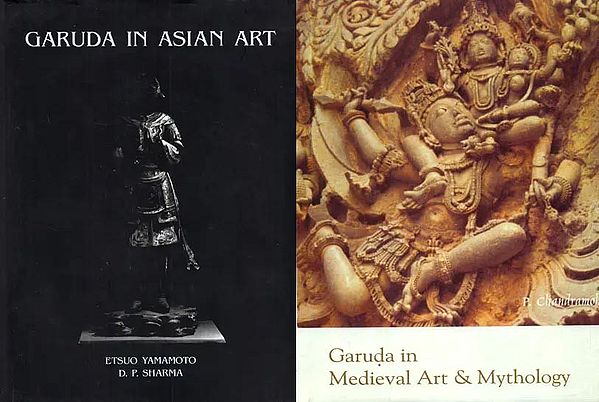
Visual Search